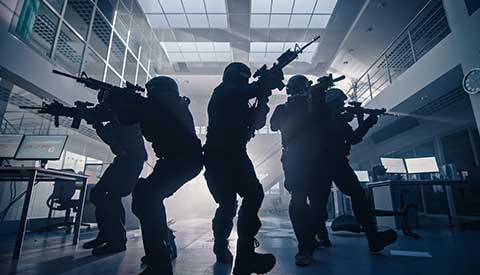Choosing the right battery for your airsoft electric gun (AEG) isn't just about powering your replica—it's about enhancing performance, ensuring safety, and prolonging the life of your gear. In this guide, we’ll cover the most common battery chemistries used in airsoft: NiMH, LiPo, NiCd, LiFePO4, and Li-Ion, helping you make an informed decision tailored to your play style and equipment.
1. Nickel-Metal Hydride (NiMH) Batteries
Overview:
NiMH batteries have long served as the go-to power source for beginners. They are reliable, affordable, and compatible with standard chargers.
Pros:
Easy to use with no specialized charging equipment required
Stable and safe—even when mishandled, they pose minimal risk
Cost-effective and widely available
Cons:
Heavier and larger for the same capacity compared to newer chemistries
Limited discharge capability leads to slower trigger response and lower rate of fire
Prone to "memory effect"—capacity diminishes if not cycled properly, though much less so than older NiCd batteries.
Ideal for:Entry-level players or backup setups where durability and ease-of-use outweigh high performance.
2. Lithium Polymer (LiPo) Batteries
Overview:
LiPo has become a staple among intermediate and advanced players. These batteries offer high performance in compact shapes due to their flexible, lightweight packaging.
Pros:
Exceptional power output, enabling fast trigger response and elevated rate of fire.
High energy density while maintaining a small form factor
Wide variety of voltage and capacity options.
Cons:
Requires careful handling and balanced charging to avoid safety risks like swelling or fire.
Shorter cycle life if not properly maintained, typically around 300–500 cycles.
Ideal for:Performance-oriented players with upgraded AEGs who can commit to proper maintenance and safety protocols.
3. Nickel-Cadmium (NiCd) Batteries.
Overview:
Once widely used, NiCd batteries are now largely outdated.
Pros:
Robust and durable.
Cons:
Strong memory effect and high self-discharge rate.
Environmental concerns due to toxic cadmium.
Hard to find replacements in modern airsoft setups
Ideal for:Only viable for those with legacy systems specifically requiring NiCd cells.
4. Lithium Iron Phosphate (LiFePO4) Batteries
Overview:
LiFePO4 (Li-Fe) is emerging as the safest lithium chemistry for airsoft applications.
Pros:
Excellent thermal stability and low risk of thermal runaway
Long cycle life—far exceeding standard LiPo or NiMH options
Safer and more reliable for extended or rigorous use
Cons:
Lower energy density, meaning bulkier packs for similar capacity
Less commonly available for airsoft applications.
Ideal for:Players prioritizing safety, long-term value, and reliability over compactness.
5. Lithium-Ion (Li-Ion) Batteries (e.g., Titan Brand)
Overview:
Li-Ion batteries like those offered by Titan Power strike a balance between energy density and safety.
Pros:
High capacity—commonly 3,000 mAh or more—offering outstanding runtime.
No memory effect and better stability compared to LiPo.
Robust even under neglect or aging.
Cons:
Slightly heavier or bulkier than comparable LiPo packs.
Lower maximum discharge rates—may not be ideal for highly tuned AEGs .
Ideal for:Players seeking a “plug-and-play” solution with reliable performance and better longevity.
Final Thoughts
**Want recommendation tailored to your AEG build or gameplay style? Contact us and we’ll help you match the ideal battery to your system.







